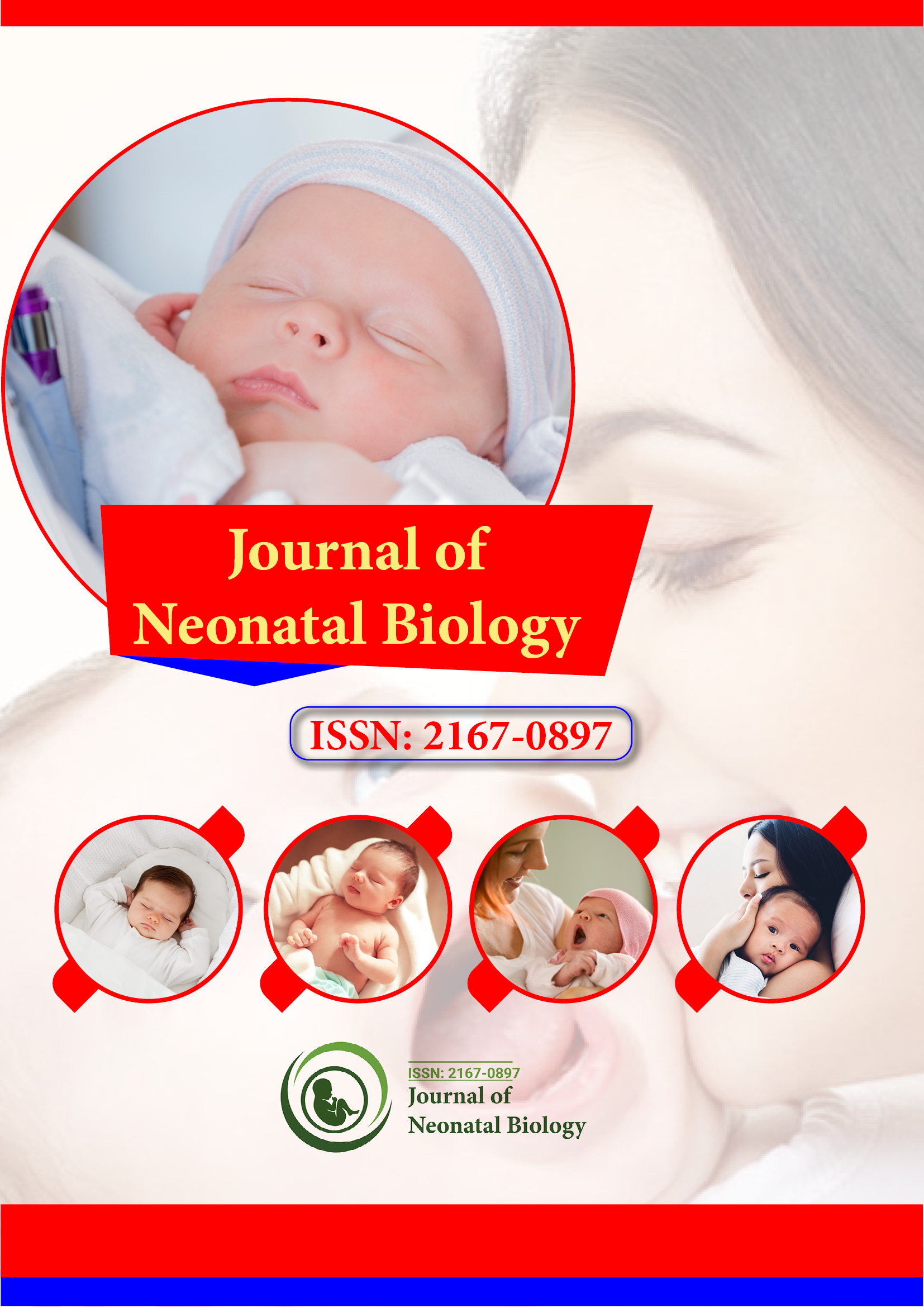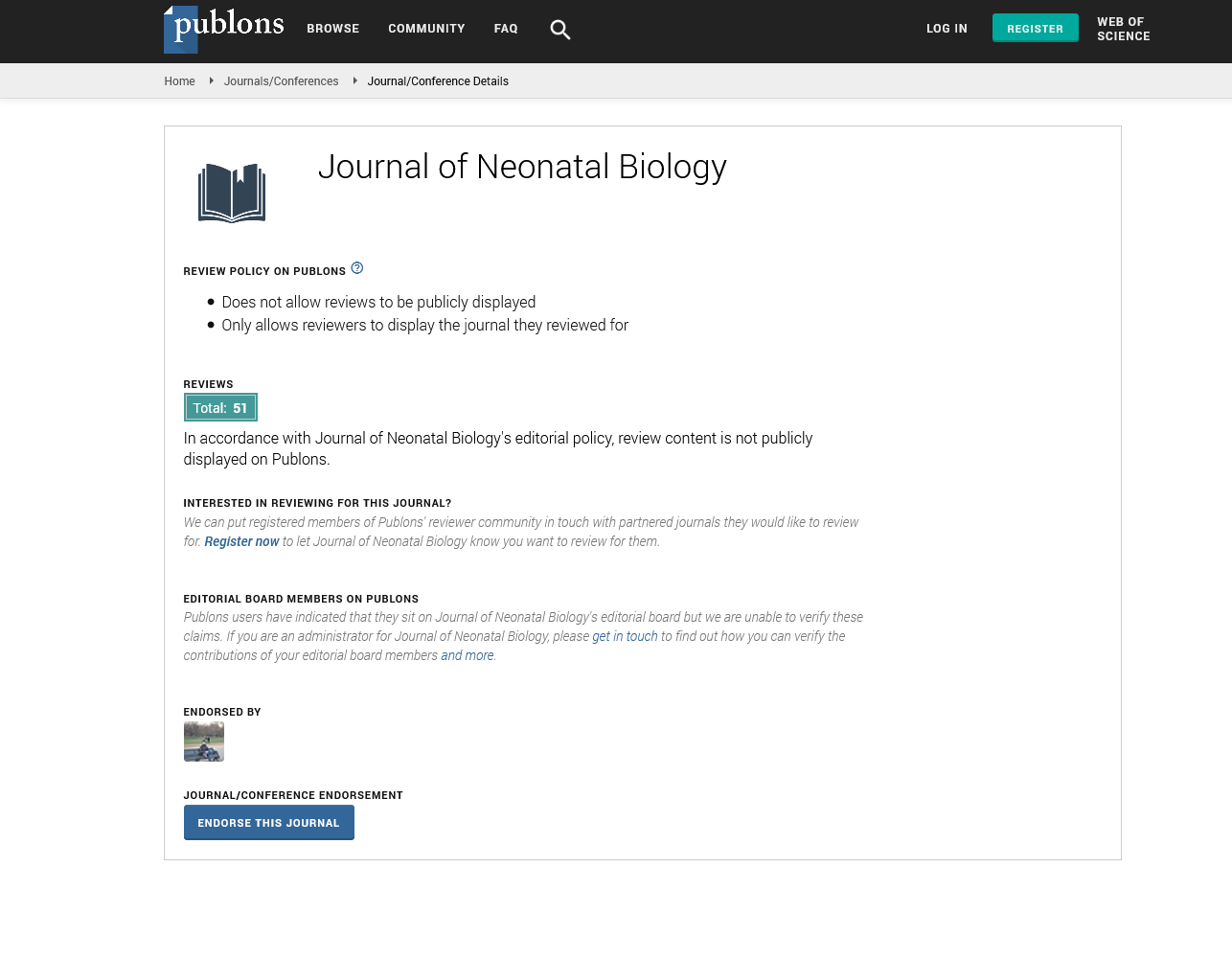Indexed In
- Genamics JournalSeek
- RefSeek
- Hamdard University
- EBSCO A-Z
- OCLC- WorldCat
- Publons
- Geneva Foundation for Medical Education and Research
- Euro Pub
- Google Scholar
Useful Links
Share This Page
Journal Flyer

Open Access Journals
- Agri and Aquaculture
- Biochemistry
- Bioinformatics & Systems Biology
- Business & Management
- Chemistry
- Clinical Sciences
- Engineering
- Food & Nutrition
- General Science
- Genetics & Molecular Biology
- Immunology & Microbiology
- Medical Sciences
- Neuroscience & Psychology
- Nursing & Health Care
- Pharmaceutical Sciences
Malignancy risk in neonatal Costello syndrome
5th International Conference on Neonatology and Perinatology
August 24-25, 2022 | Webinar
Ramachandran Muthiah
Morning star hospital, Marthandam, Kanyakumari District, India
Scientific Tracks Abstracts: J Neonatal Biol
Abstract:
Costello syndrome is a rare RASopathy resulting from germline mutations of the proto-oncogene HRAS. Many of these mutations affect SHP2, SOS1, RAS, RAF and MEK proteins it was discovered by Dr.Jack Costello, a New Zealand paediatrician in 1977. Dr.White says. Costello syndrome is now known to be one of a group of related disorders,, caused by abnormal functioning of the Rasâ?mitogenâ?activated protein kinase (RAS/MapK) pathway. Ras/MAPK pathway is an essential signalling pathway that controls cell proliferation, differentiation, survival and its dysregulation causes clinically overlapping genetic disorders, called as ‘Rasopathies’.In this pathway, Ras, a GTPase, transmits extracellular signalling from receptor tyrosine kinases to two serine/threonine kinases (Raf and MEK) and, finally, to the activation of MAPKs. Frequency of malignancy in mutation positive cases is 11%. In the Japanese and North American series, the commonest mutation was the G12S missense substitution. In G12Ser mutation, rhabomyosarcoma was observed in (7%), with a benign bladder tumour in a single case and the, more severe neoplastic phenotypes are p.Gly 12 Asp and p.Gly 12 Cys. The features of increased index of suspicion of CS in new born are fetal atrial tachycardia, increased birth weight and head circumferencw, neonatal hypoglycemia, severe feeding difficulties and urinalysis for hematuria (embryonal rhabdomyosarcoma) and loose, redundant skin on the hands and feet seen in newborns (key role in clinical suspicion of CS). Ras pathway agents, such as farnesyl transferase inhibitors (tipifarnib and lonafarnib) that prevent posttranslational modification of Ras, are being evaluated and may be of therapeutic use for syndromes in this pathway, especially CS. MEK 162 (Binimetinib), orally available inhibitor of mitogen-activated protein kinase kinase 1 and 2 (MEK1/2) ,directly target the RAF-MEK-ERK 1/2 cascade and it is the best tool against cardiac hypertrophy. The most established mTOR inhibitors are so-called rapalogs (rapamycin and its analogs) reverse cardiac defects. Simvastatin- interact with Ras isoprenylation, decrease Ras activity and low dose statin with selective inhibition of pathological ERK 1/2 signaling is an exciting possibility in the reatment of CS patients.MEK inhibitors rescue the enamel mineralization defect in costello syndrome. PI3K inhibition only corrects the progenitor cell proliferation phenotype. RAF-1 inhibition by C-type Natriuretic Peptide (CNP) improved bone growth in preclinical animal models. The Splicing Efficiency of Activating HRAS Mutations can determine Costello Syndrome Phenotype and Frequency in Cancer. This unravels a potential for development of new anti-cancer therapies based on SSO-mediated HRAS exon 2 skipping. Gene correction of these germline mutations to restore normal protein functions is anticipated as a new therapeutic option. Oxidative stress- play a role in cancer development and free radicals- determine non-neoplastic clinical features such as elastin anomalies, alteration of skin and appendages, developmental retardation and cardiac defects. PAR therapy (potassium ascorbate with ribose) a reduction in oxidative stress biomarkers in parallel with improvement of clinical features. It combines the antioxidant action of vitamin C with the stabilizing intracellular effects of potassium and causes improvement of skin and appendage lesions, better evolution of psychomotor development, no Progression of heart hypertrophy, nor tumor development. It is low cost, no side-effects, orally administered and useful for all genetic syndromes with cancer risk.
Biography :
Ramachandran Muthiah, Consultant Physician & Cardiologist, Zion hospital, Azhagiamandapam and Morning star hospital, Marthandam, Kanyakumari District, India. Born on 10/5/1966.. Mother Swornam belongs to keezhkulam village and Father Muthiah belongs to Enayam thoppu and both were farmers. Published many papers in Cardiosource, American College of Cardiology Foundation, Case Reports in Clinical Medicine (SCIRP) and Journal of saudi heart assocoation.

